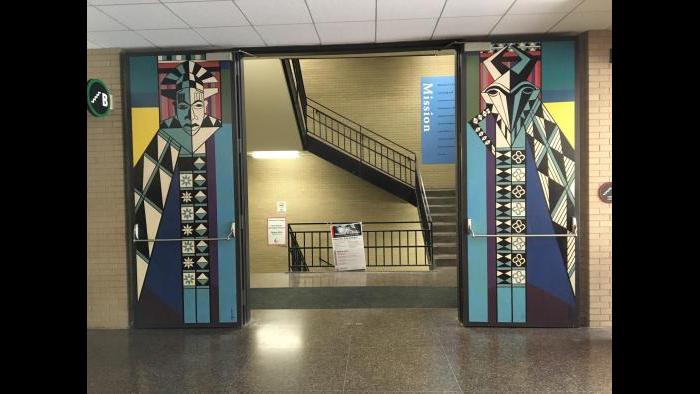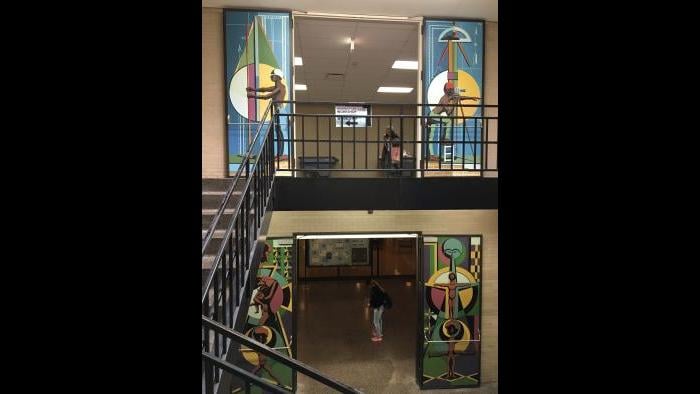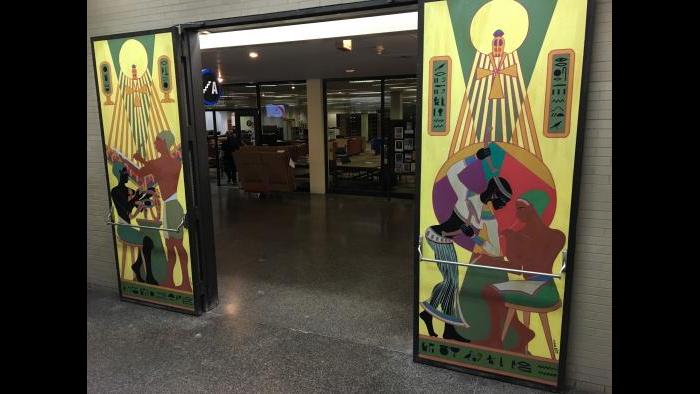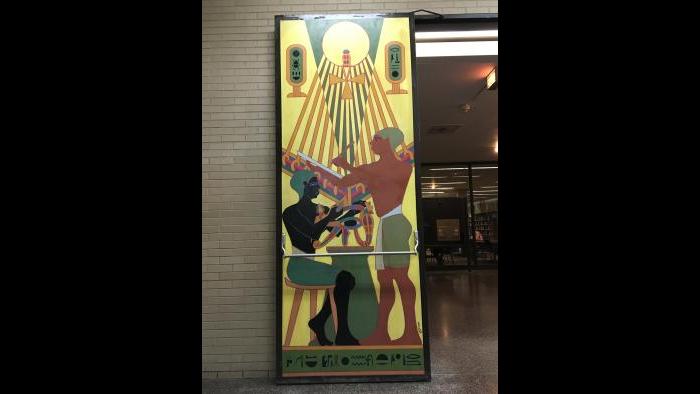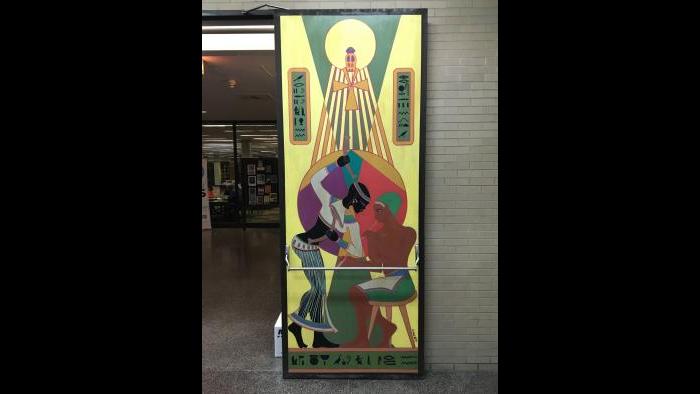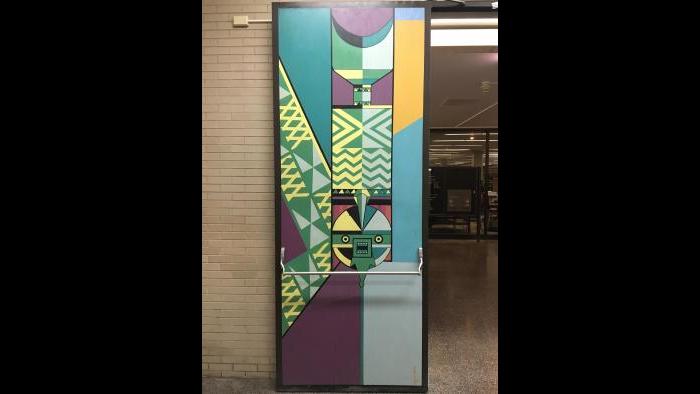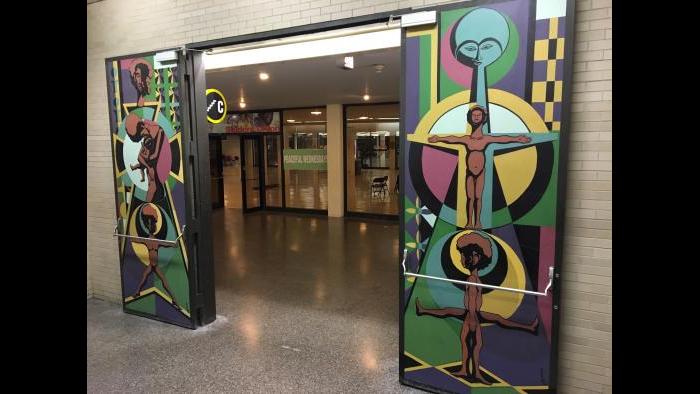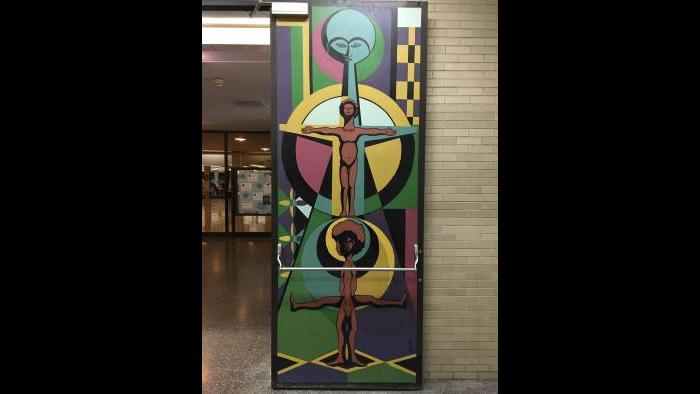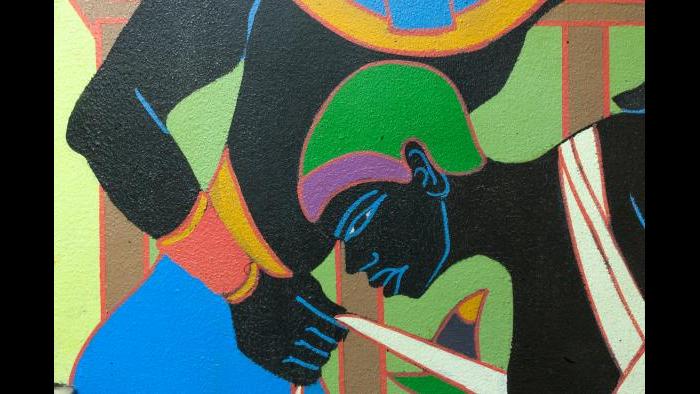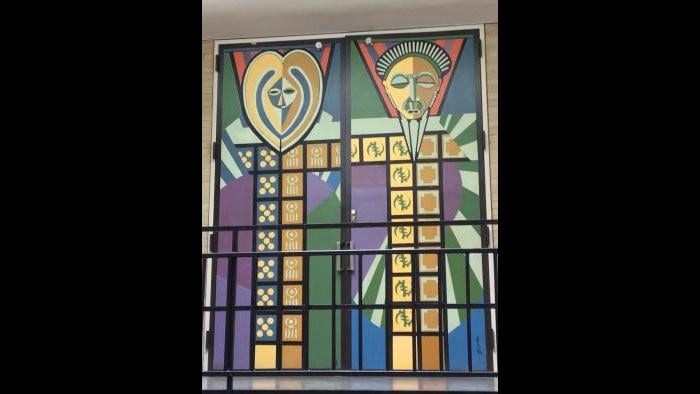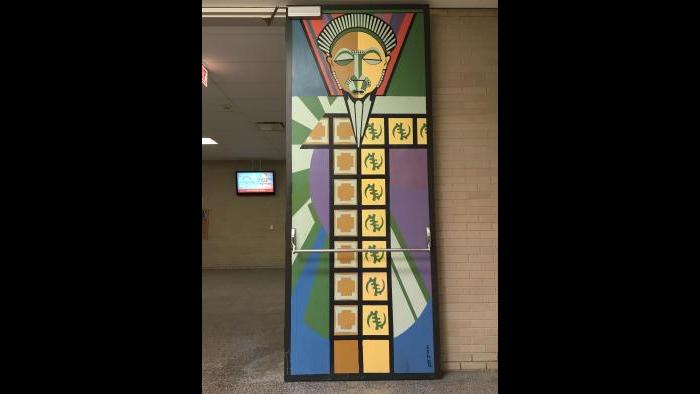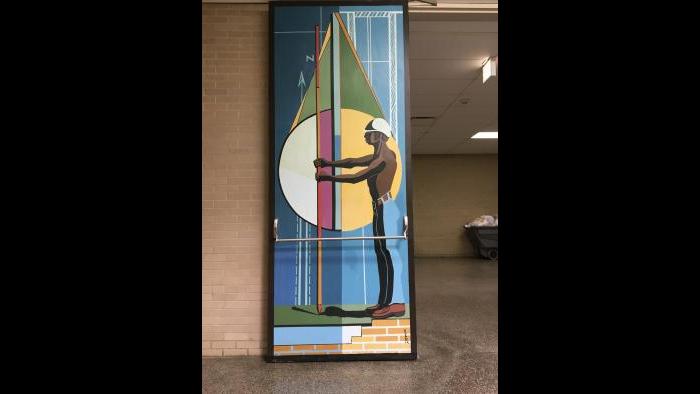A pair of new exhibitions open the door to an arts movement that flourished in Chicago in the late 1960s and early ‘70s.
Chicago Tonight met one of the artists who made a welcome impression on the city nearly 50 years ago.
TRANSCRIPT
Jay Shefsky: At the Cultural Center, a monumental art exhibition is on display. Thirty-two 10-foot-tall doors are coated in vivid colors.
Painted in 1971 and ’72, the doors hung in Malcolm X College. They were saved when the old college was demolished in 2016 to make way for a new facility.
Seeing them for the first time in years is the man who painted them.
Eugene Eda Wade is retired now and living in his home state of Louisiana. He came to Chicago recently to revisit his creations and reminisce.
Eugene Eda Wade: They asked me could I decorate those doors with mural painting, so I didn’t really have a choice as to whether I’d do it on canvas, wood, brick, whatever. They were metal doors, and I figured the easiest way to do that was just to prime them. I gave them two good coats of prime, and once that dried I began to do my design and composition on there.
Shefsky: It took him nearly two years to paint all 32 double-sided doors by himself. Sometimes he had company.
Wade: Students walked through this back and forth every day. Classes were in session, so I worked around that and took my time and created what I needed to create.
Shefsky: The acrylic paints he used are well-preserved. Students used the doors, but left the paintings alone.
Wade: This is 46 years old, so evidently the students had some kind of respect for the mural paintings as well.
Shefsky: “Respect” is also the theme of another show at the Chicago Cultural Center.
Chicago Tonight visited while curators supervised the installation of an exhibition on the Wall of Respect – which once stood at 43rd and Langley.
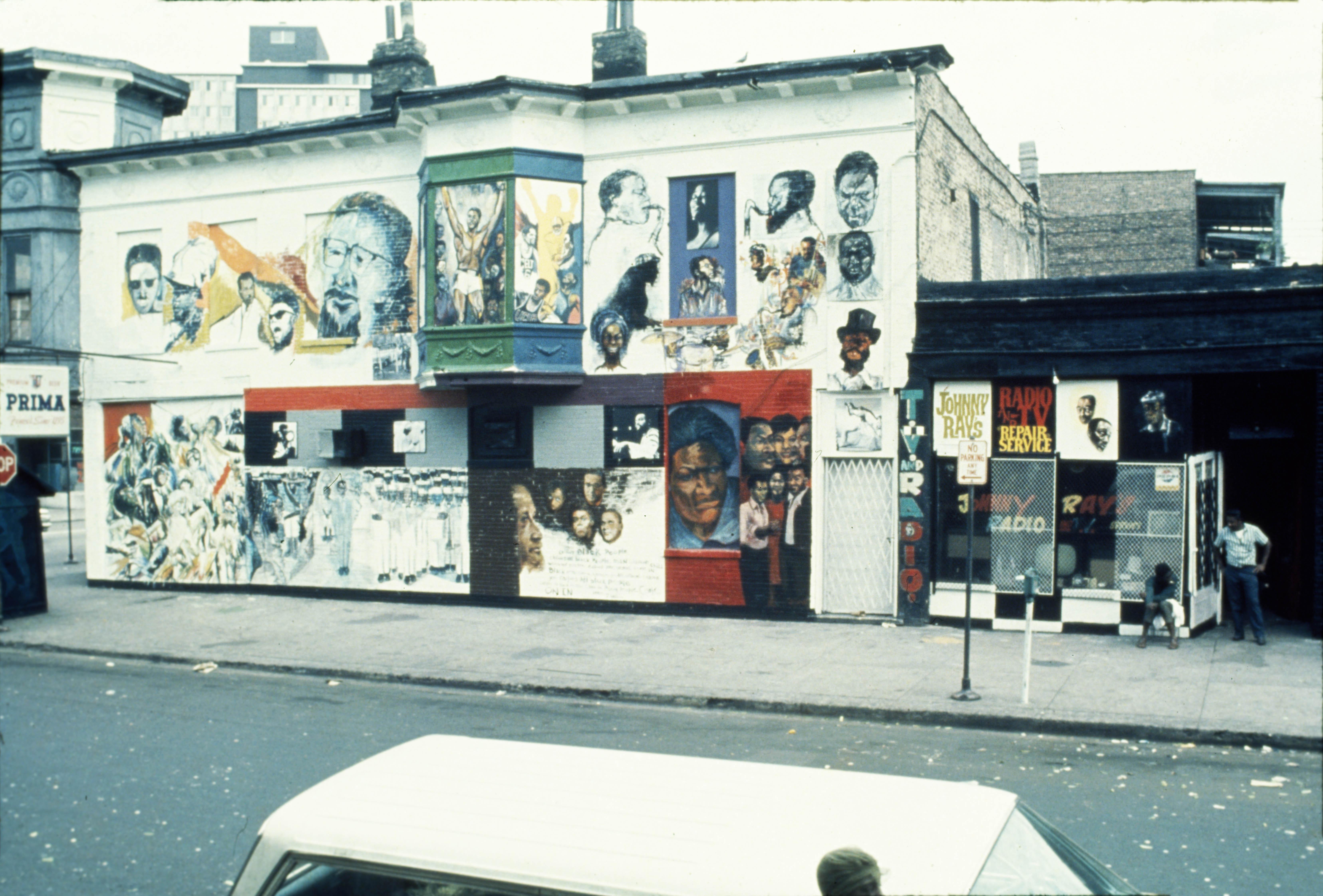
Romi Crawford, curator: The Wall of Respect was lots of things. It was a public art work, an object, an art object in many ways. It was conceived by a powerful entity, a collective called the OBAC, which stands for the Organization of Black American Culture, in 1967, really a collective of artists and makers and thinkers and educators who came together to conceive a public art project that was meant to be for the community.
Shefsky: The wall was first painted just weeks after the Picasso was unveiled in the summer of ’67.
Artist William Walker was its chief creator. And, during an early phase of the ever-evolving Wall of Respect, Walker hired Eugene Eda Wade.
Wade: The community was very proud of it, from the original concept and the idea of doing heroes and she-roes and all those blacks that had made contributions.
Shefsky: A young girl who related grew up to become one of the curators of this exhibition.
Crawford: I have a really close relationship to the Wall of Respect. I was a Wall of Respect baby in some ways. I was there when I was about 3 years old I guess: My father was one of the photographers who hovered around the Wall of Respect and flocked there, and so many of the images in the show come from his archive.
Shefsky: Back at the door exhibition, Eugene Eda Wade welcomed us in for a tour.
David Sanders, president of Malcolm X College: This Africana art is tremendously special to the community, and it represents the rich history that we have at Malcolm X College. The idea behind having Eugene come in to do the work was to represent the students and the community that we serve, and so it was important to us, and still it remains important to us.
Wade: It feels good to see them and know that they are being preserved, and that they are being saved and that they could be exhibited from now on.
Shefsky: The doors – and “The Wall of Respect” exhibit – are a sampling of what the city has named “The Year of Public Art.”
Commissioner David Kelly, Chicago Department of Cultural Affairs: There’s five incredible visual art shows in the Cultural Center, in the People’s Palace, and they all have this deep democratic thrust. Often when we think of coming to a gallery or a museum, somehow it’s this special “you’re here to be edified” but these shows take us in a very different direction. They’re about voices of the city being heard.
Crawford: We’re really bringing to life and sharing and exposing to Chicagoans a bit of Chicago history.
![]()
The building that was home to the Wall of Respect was damaged by a fire in 1971 and later torn down. The “Wall of Respect” exhibition is at the Cultural Center through the end of July.
The painted doors of Malcolm X College are on display at the Cultural Center until the end of June.
Related stories:
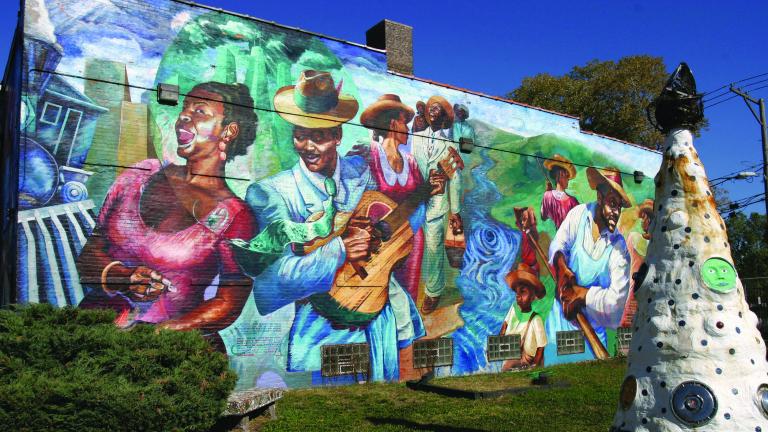 Neighborhood Project Aims to Grow Chicago’s Public Art Profile
Neighborhood Project Aims to Grow Chicago’s Public Art Profile
Feb. 21: New murals, sculpture and other works of public art are coming to each of Chicago’s 50 wards as part of the city’s Year of Public Art initiative.
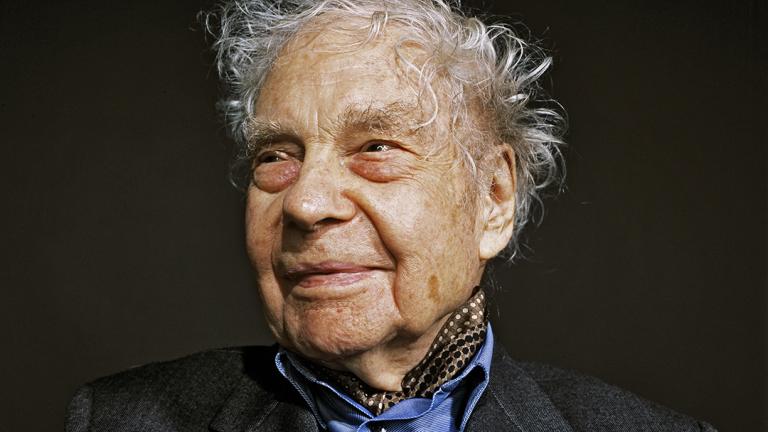 Revolutionary Dance of Merce Cunningham in the Spotlight at MCA
Revolutionary Dance of Merce Cunningham in the Spotlight at MCA
Feb. 21: The Museum of Contemporary Art Chicago joined forces with the Walker Art Center in Minneapolis for a dual exhibition about an artist of dance who worked with celebrated artists of other disciplines.
 ‘Passion for French Posters’ on Display at Driehaus Museum
‘Passion for French Posters’ on Display at Driehaus Museum
Feb. 13: When fine art and advertising joined forces: We check out a new exhibition of posters from late 19th century France.

